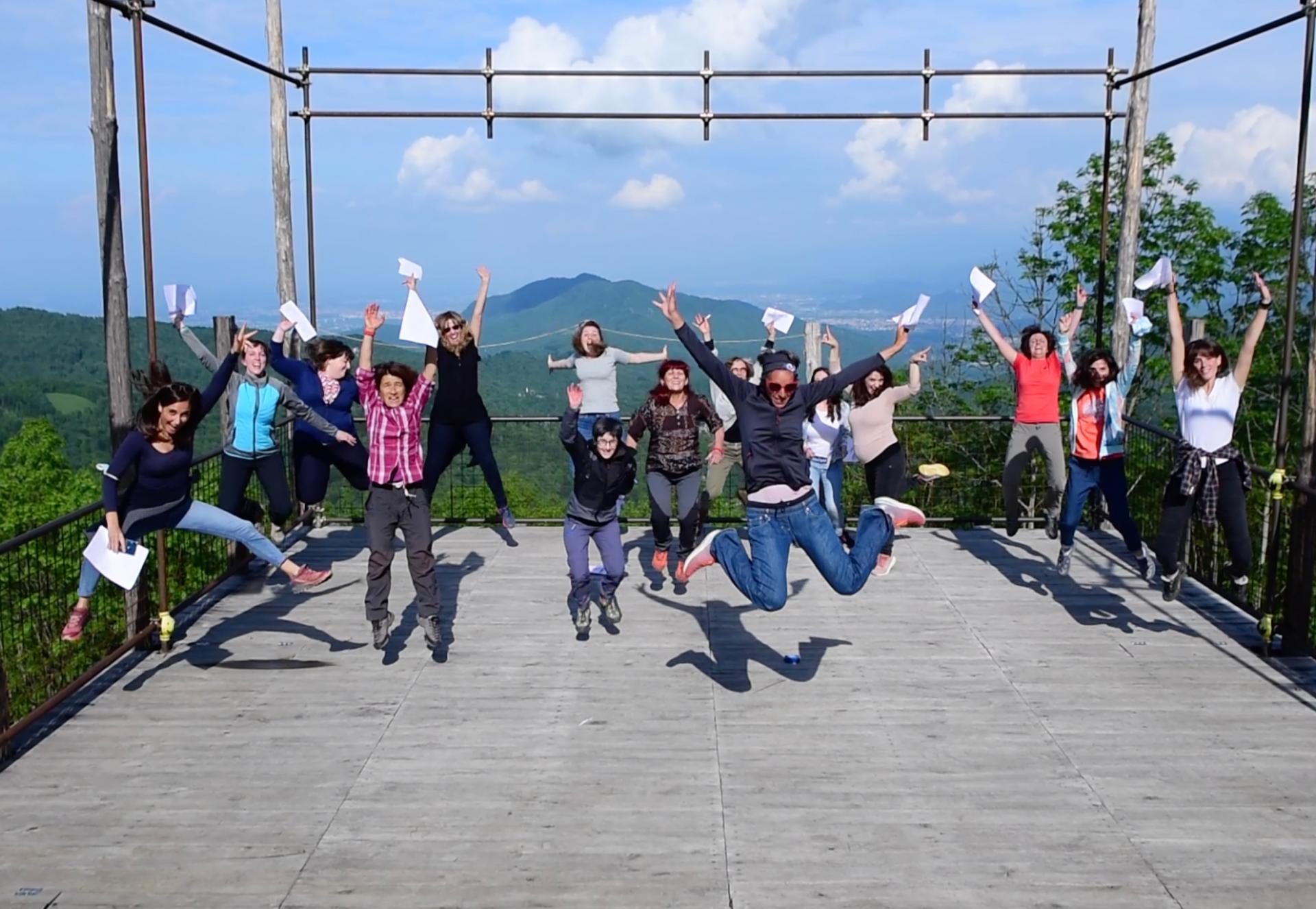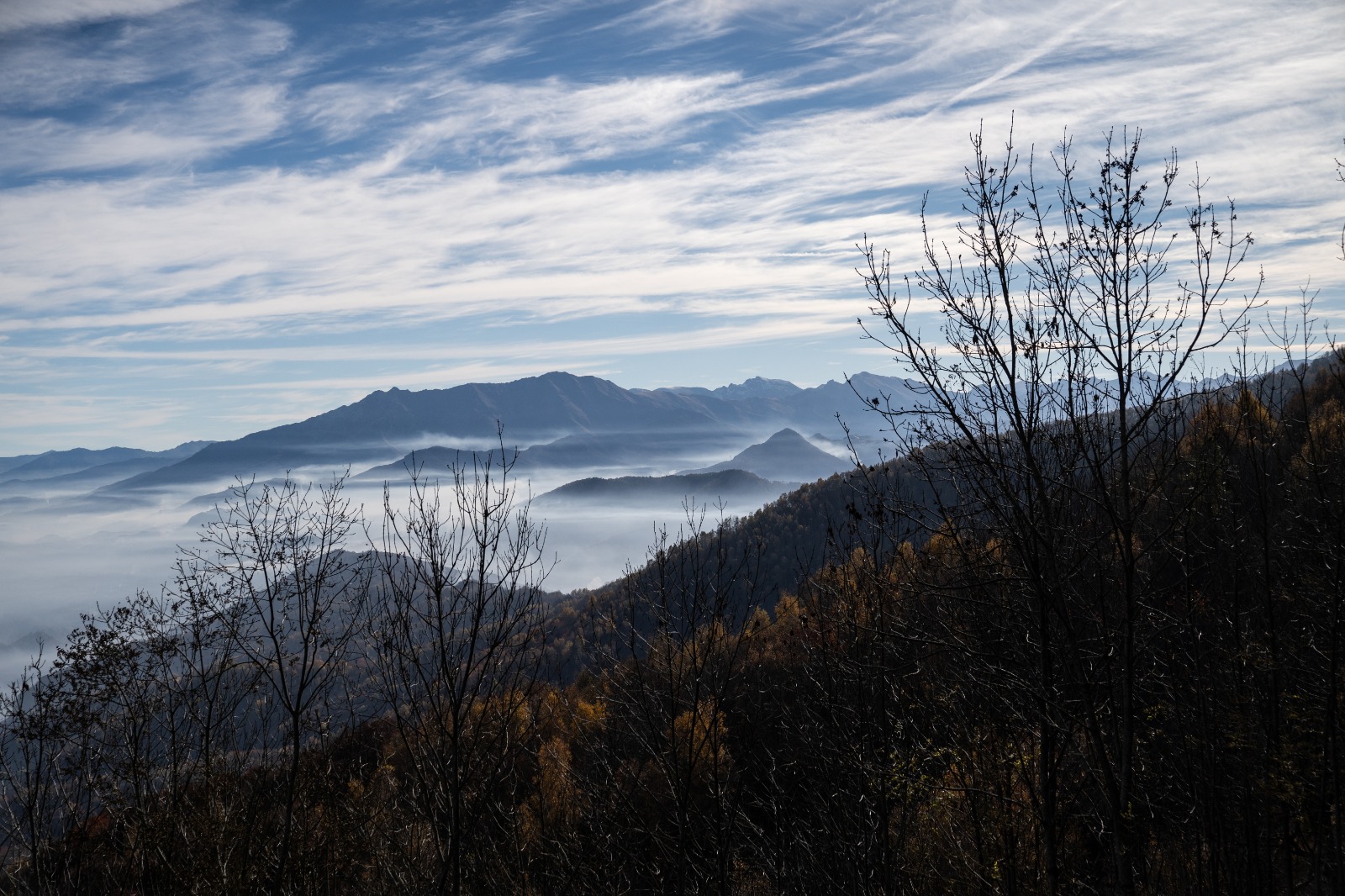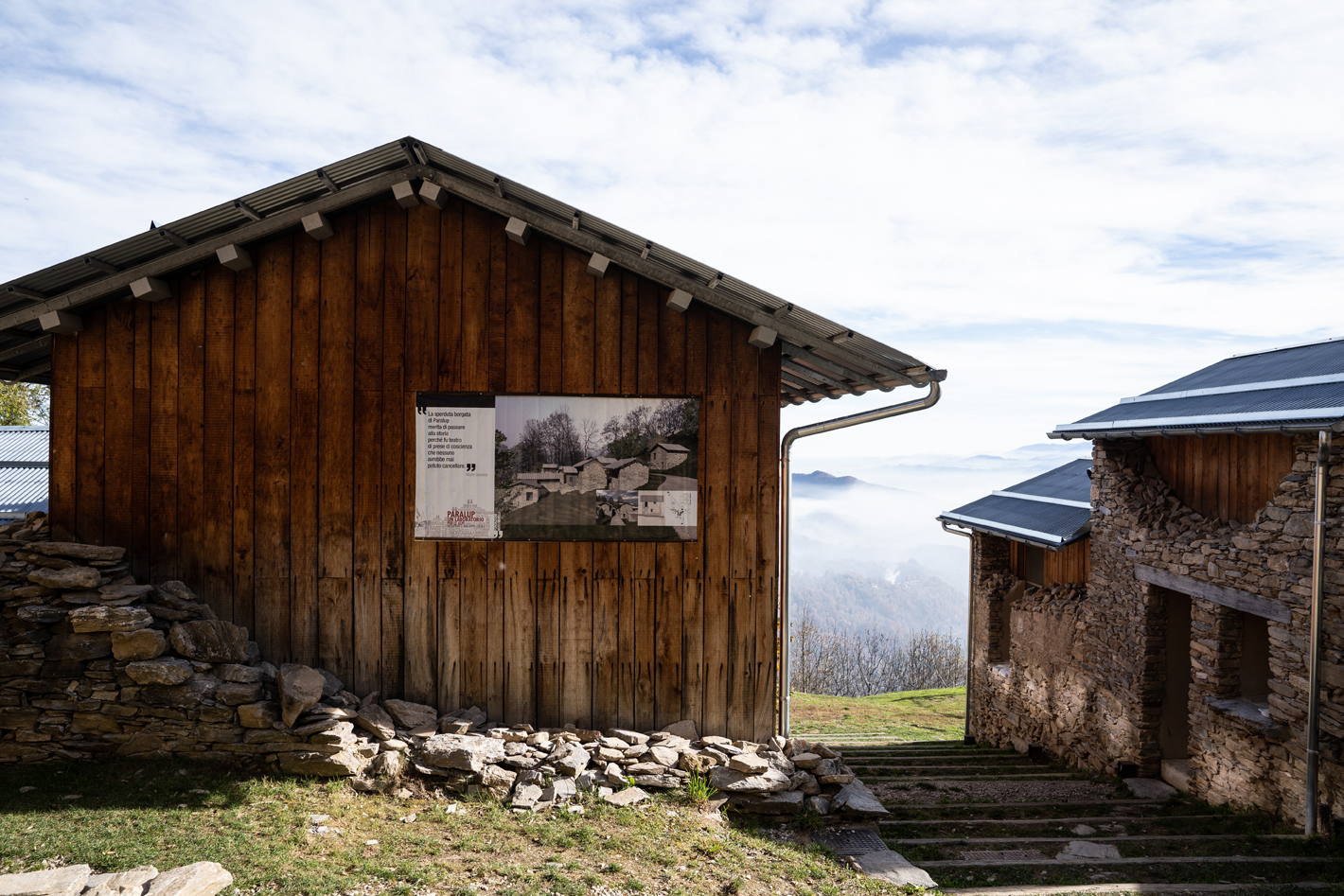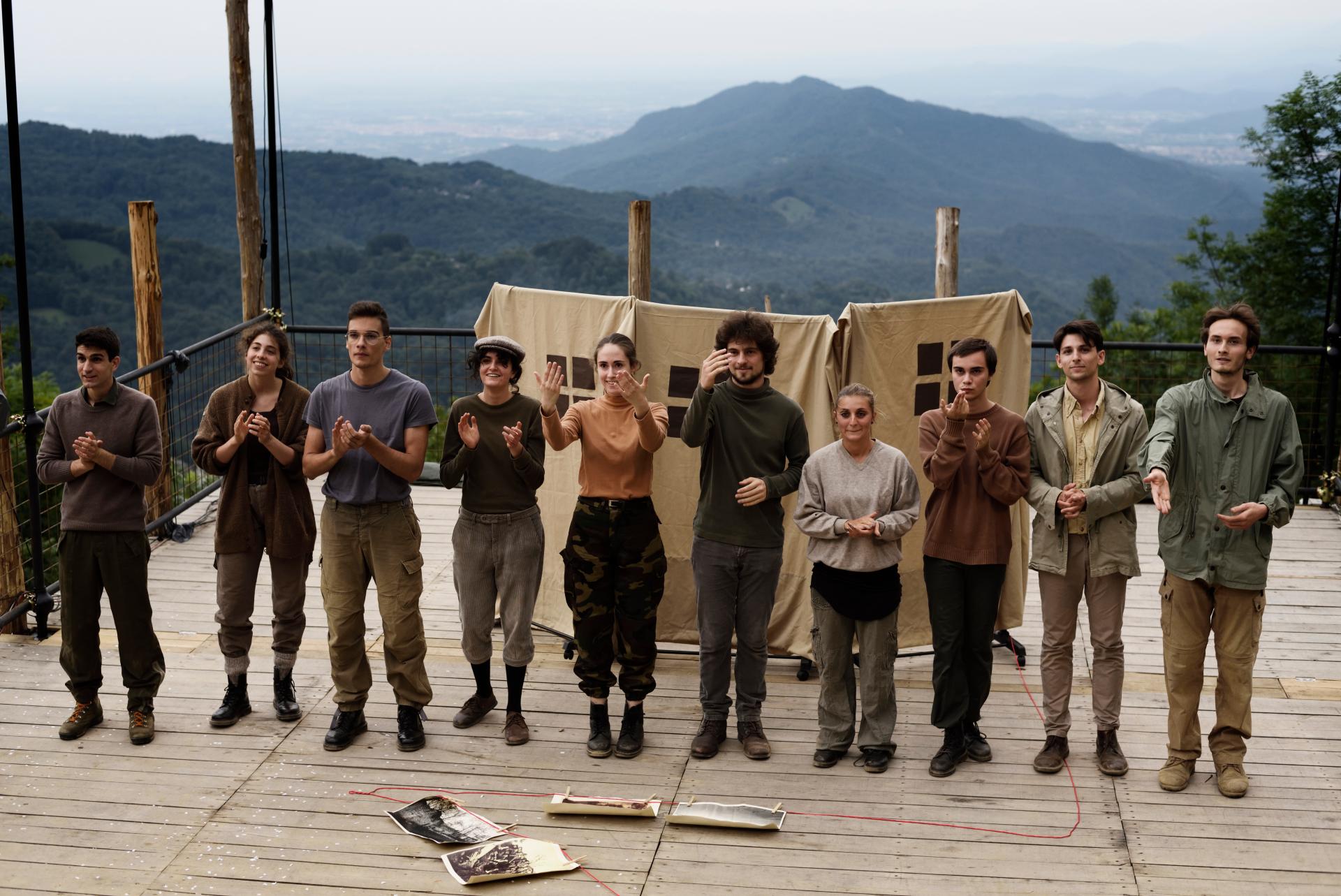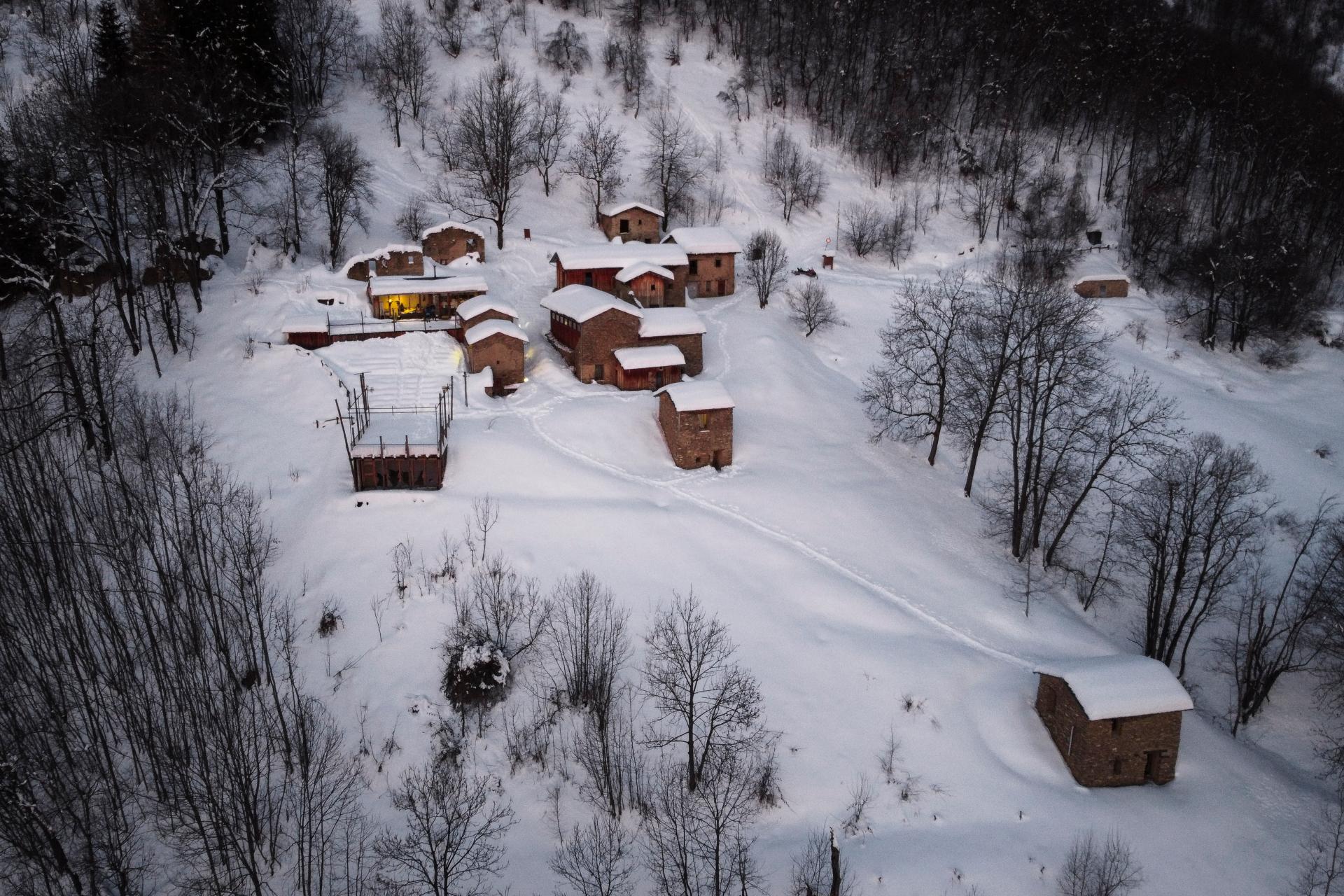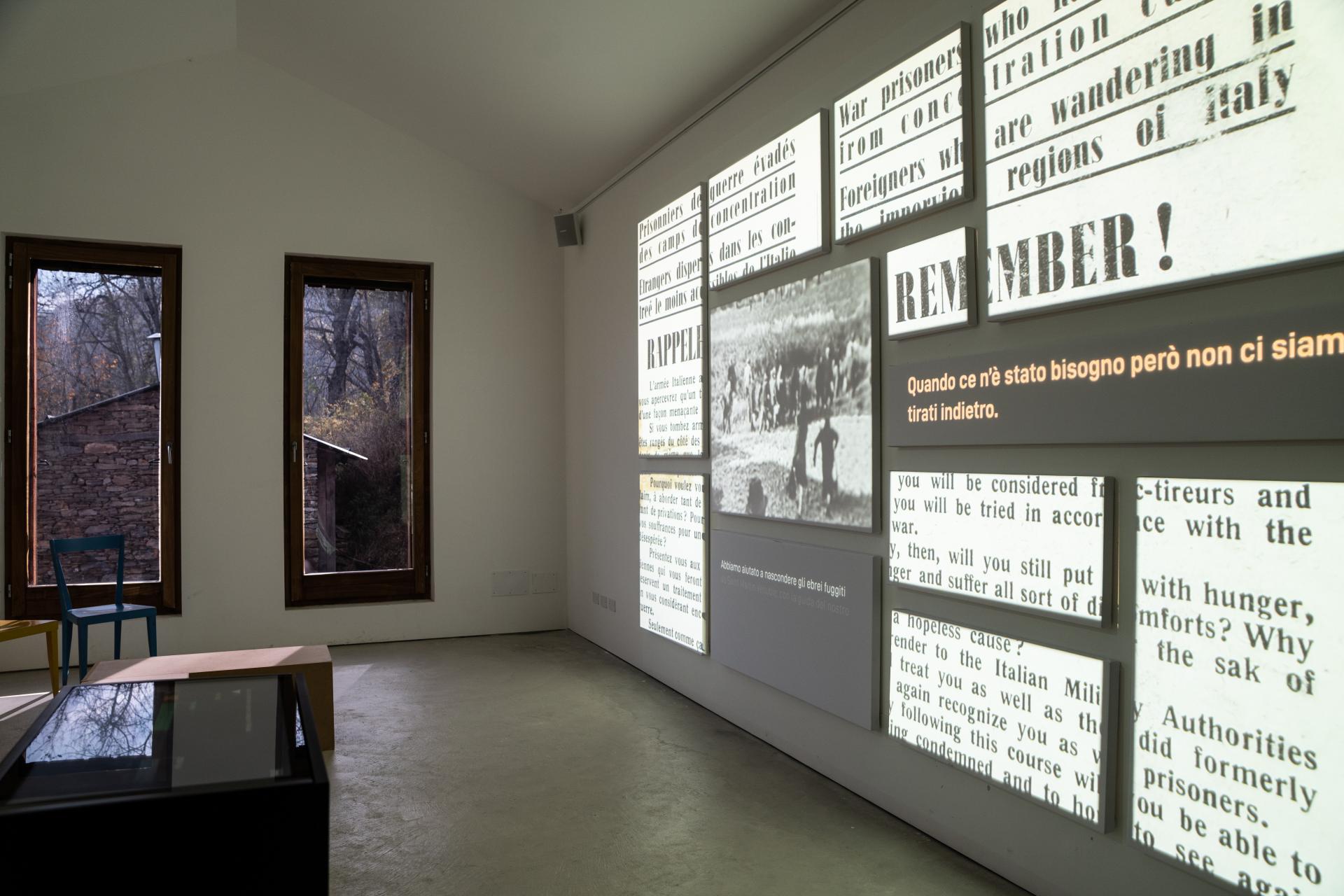The Alpine Renaissance of Paraloup
Basic information
Project Title
Full project title
Category
Project Description
Paraloup is a place ‘sheltered from wolves’ up in the western Italian Alps.
Where once the partisans struggled their fight against Nazi-fascism, there is now a cultural and social innovation hub where nature meets history and charts a course for the future.
Here stands The Museum of Tales: a digital space housed in a mountain hut connecting the voices of memory with the challenges of today’s society by means of meaningful questions.
We practice a culture driven return to life in mountain areas.
Geographical Scope
Project Region
Urban or rural issues
Physical or other transformations
EU Programme or fund
Which funds
Description of the project
Summary
Paraloup ('sheltered from wolves' in the local idiom) is a small mountain village up 1360 m in one of the Alpine valleys linking Italy with France.
The village has undergone various transformations over time: from the early 1900s it was a pasture, then between 1943 and 1944 it was the headquarters of the ‘Italia Libera’ band, one of the first partisan formations in Italy composed by 200 young people aged 16-39 who there get trained to fight against Nazi-fascism. Finally, following the depopulation of the mountains from the 1960s, it was gradually abandoned.
Between 2006 and 2018 the Nuto Revelli Foundation renovated the village with a sustainable architectural project in order to make it available to communities, schools and the general public as a physical and dynamic place witnessing a double memory: that of the Resistance and that of rural life in the mountains.
Today Borgata Paraloup is a cultural and social innovation hub carrying out its activity in the following spaces:
- A multifunctional space and co-working;
- A restaurant with a terrace and 3 guesthouses run by a group of young people permanently living in the village;
- An open-air theater with 200 seats;
- A temporary site-specific art hut.
The Foundation has installed a broadband radio link in Paraloup that provides free wifi connectivity to visitors and to the residents throughout the valley.
In September 2020 Paraloup completed his transformation fullying expressing his identity with the opening of The Museum of Tales: an immersive digital installation where visitors can plunge in local history surfing a timeline that activates a dialogue with the witnesses of those times.
Here’s a video interview to Marco Revelli (President) the day of the opening (05/09/2020): https://bit.ly/3hEtSjV
Here’s a text interview to Beatrice Verri (Director) explaining the Museum design: https://bit.ly/3CoXWJS
Key objectives for sustainability
The Museum of Tales is sheltered inside a hut of Paraloup. His restoration process and the research for the digital contents of the Museum have followed the same principles of landscape protection and valorization underlying all the activities of the cultural center. Here a brief curriculum:
2011 - Legambiente, an important Italian Association for environment protection, awarded* Paraloup with the Green Flag for the Alpine Caravane and, in the same year, Paraloup gained a special mention to Der Liechtenstein-Preis for sustainable construction
2017 and 2019 - Young Mountain Farmers School of Paraloup: 10 people trained (1 migrant) with the support of the University of Turin.
2018 - Paraloup is co-founder of the first Land Association of the valley for the landscape reusing and biodiversity protection
2019 - Paraloup organized the international congress ‘Facciamo Agri-Cultura’ and hosted the Movimento dos Trabalhadores Rurais Sem Terra and the reporter Pablo Ernesto Piovano
2021 - Alpine Pastoral Rebirth project: for an innovative approach to the grazing goats in mountain forests. During the summer Paraloup hosted a shepherd (former architect) with his 140 goats who made his cheese in the village. This was the very first productive activity returning in the valley after 50 years (the Maire said: “This summer in our town there were more goats than residents!”). This action has been led in partnership with SlowFood international that presented it in the international Cheese event as a best practice to be replicated in the Alps (https://www.youtube.com/watch?v=9hG4JY-0VU0)
[* the herelisted prizes and the ones mentioned in other sections were not linked with the EU and didn’t bring any kind of economic reward]
Key objectives for aesthetics and quality
The restoration of Paraloup has been done in accordance with the criteria of sustainability, reversibility and minimum intervention of the Charter of Krakow 2000. The ruins were consolidated as they were when abandoned, and boxes of untreated local chestnut wood were "strung" to create volumes that perfectly blend with the mountain landscape.
ANCSA, the National Association of Historical Centers of Italy, awarded Paraloup with the Gubbio Landscape Prize*: the motivation quote: “The architectural design is exemplary. The stone walls remain, as they are, appropriately consolidated,and inside them are wooden structures. With meticulous attention to the problems of energy saving issues”
The Museum of Tales, hosted in one of the biggest hut of the village, offers a temporary exhibition room, an interactive and immersive multimedia installation and a room dedicated to the memory of partisan women.
Entering the museum the visitor is immersed in 19th century History listening to the stories lived by the community of inhabitants of Paraloup that are told by their own, real voice. Using a touch screen, visitors can surf through the four epochs that have most significantly characterized the history of this land:
- 1861/1935: the end of the nineteenth century, with the alpine migrations and rural civilization
- 1943/1945: the Resistance period
- 1950/1980: the depopulation of the Alps with the opening of the big industry (Michelin, Ferrero, FIAT…)
- 2008/today: the return to mountain life: young people tell their story of return
After listening to the introduction of the chosen season, several questions appear on the screen that the visitor can ask to the witnesses protagonists of those "seasons": at that point the voices of the protagonists, often interviewed by Nuto Revelli himself, will answer. With this philosophical trigger, the witnesses of yesterday open a dialogue with the visitors of today, providing questions and visions about present and changemaking.
Key objectives for inclusion
Paraloup attracts a very mixed public: every year more than 30,000 people go trekking or mountain biking along the path that borders the village, which is a popular outdoor tourist route. Besides this audience, which is very interesting for a new cultural center that wants to avoid the trap of self-referentiality, Paraloup also addresses its offer to schools and history, architecture and rural regeneration lovers. In designing the museum layout, that works by the means of questions and answers, we put ourselves in children's shoes, so partisans can also be asked how they spent their time when not fighting, what they used to eat or whether they fell in love. We want that no one feels left out during the visit.
Hypothetically, it is a museum that you can just listen to, with your eyes closed, and the volume can be adjusted even for those with impaired hearing. It is a digital installation that is very easy to activate, but a public that might need accompaniment is one that is less accustomed to digital: for this reason we make sure that there is always one of us ready to support the public.Lastly, with regard to accessibility, the Foundation is working on an overall project to adapt the entire village and will soon be setting up a multidisciplinary workshop on this very special subject.The Museum of Tales is designed in 3 languages (ita, en, fr) to meet the needs of the international visitors.
The gender equality topic is very important for us: one of the rooms of the Museum hut is called ‘The strong ring lab’ and is dedicated to the memory of mountain women: from this lab starts the project W-echo for the political empowerment of women living and working in the mountains (https://wecho.eu/en/).
Regarding the involvement of migrants, Paraloup is partner of Viaggisolidali in the Erasmus+ project Rural Migrantour to co-design a tour with local people with a migratory background. The entrance to the Museum of Tales is free for everyone (donations are welcome). Free wifi.
Results in relation to category
The Museum of Tales was opened in September 2020. The monitoring of the free access was carried out first by manual ticketing then by people counter devices installed in January 2022. The Foundation and Social Enterprise staff was trained in the skills of monitoring and evaluating Paraloup cultural actions. Two projects have carried out capacity building actions in this respect:
- Onlife Resistance a digital transformation project mainly oriented to the innovation of the educational area
- Impactour a European project aimed at identifying a set of indicators suitable for measuring the social impact of cultural projects in rural areas (https://www.impactour.eu/pages/borgata-paraloup-italy)
The Museum has stimulated two projects on specific targets that have enabled the creation of sets of indicators, both quantitative and qualitative through surveys:
- ImparaLOOP: a project that involves middle school students who, after visiting the Borgata, "bring home" the contents of the museum in order to produce their own digital content
- Wecho: the lead project for the empowerment of mountain women (https://wecho.eu/)
The basic indicators collected so far are the following:
- of the total number of visitors who come to Paraloup mainly to practice outdoor sports to date, about 10% enter the museum spontaneously, not counting organized events and guided tours
- 120 students and 6 teachers involved in the educational project ImparaLOOP. Additional guided tours of school groups involve about 2,000 students to date
- 156 women's testimonies collected with the Wecho project in 11 countries to deliver to the European Union the point of view of women as changemakers in fragile rural areas
From the end of 2022 many other deliverables will be gained, but for the moment we are able to envision a strong impact of the Museum of Tales on school, women and a growing attraction to sportspeople spontaneously coming to Paraloup with the main result of audience hybridization.
How Citizens benefit
‘The gang gathered in the smoky barn and here they discussed ideas, projects and proposals’ (Nuto Revelli, The war of the poors).
Paraloup was the scene of a peculiar form of community resistance, much studied in the History of the Italian Resistance: a place of transformation for 200 20-year-olds who, having left as farmers, students and artisans from all over Italy, turned into partisans and descended into the valley to fight for the liberation of Italy from Nazifascism, contaminating towns with their struggle for freedom. The three communities that worked together for mutual salvation here were: the mountain dwellers, the partisans and the Jews who had fled from the forced residence centre of Saint Martin Vésubie. This transformative and inclusive mission of the place still lives today and is the inner sense of what Paraloup is: a place where one can go, transform, descend and contaminate the cities. With culture.
This strong sense of community engagement has survived and we have luckily inherited it from the very beginning of our restoration process. The recovery operations of Paraloup were actually carried out through a process of participatory planning together with the community of inhabitants, thanks in particular to the commitment of the then Mayor Adriano Perona (son of partisans collaborators), who declared: "reviving Paraloup is the dream of my life".
The participatory approach has been also used in the content design of the Museum of Tales for the last season of the immersive digital installation: the returns.
Physical or other transformations
Innovative character
We are not currently aware of mainstream practices in the creation of cultural hubs in regenerated mountain areas with historic roots in civil struggle.
We have some contacts with other cultural associations with whom we co-design, instead.
The innovative character of The Museum of Tales lies in the mission of Paraloup itself, in the cultural matrix of concrete actions aiming at repopulation of deserted Alpine areas.
We practice simple but beautiful, sustainable and inclusive actions to make it possible to live, create and work in the mountains again, both through the recovery of traditions in an innovative way, for example with the use of digital technologies and ensuring broad connectivity, and through artistic residencies that recover the disruptive spirit of the young people who in 1943 went up into the mountains to become partisans and then came down again, making their contribution to the defense of freedom and influencing the course of European history.
Learning transferred to other parties
The transformative and inclusive mission of the place still lives today and is the inner sense of what Paraloup is: a place where one can go, transform, descend and contaminate the cities. With culture. This potential can be viral in other landscapes of memory all over Europe. If we manage to do it up in the mountains, it can be done everywhere!
In these years we’ve been contacted by many organizations who came to Paraloup to learn the regeneration of the rural historical process: the Giacometti Foundation, for example, that searched for inspiration for the restoration of the village in the Alps where the famous artist Alberto Giacometti was born.
The European project Impactour aimed at identifying a set of indicators suitable for measuring the social impact of cultural projects in rural areas (https://www.impactour.eu/pages/borgata-paraloup-italy) is matching Borgata Paraloup and the Museum of Tales in a wide network of cultural hubs in rural area all across Europe.

